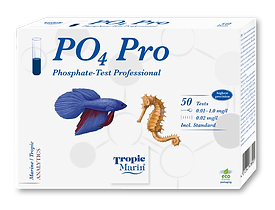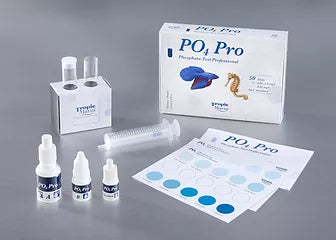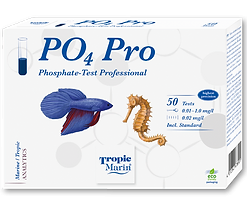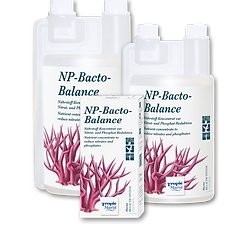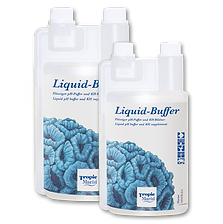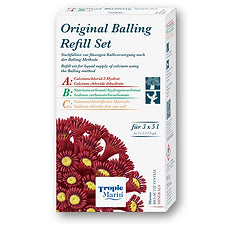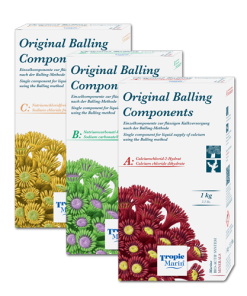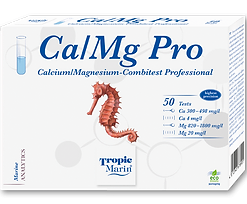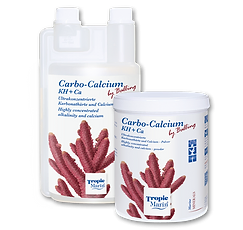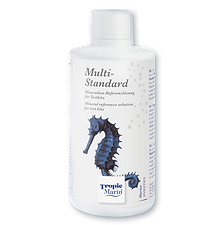PO4 Pro Test
Phosphate test professional for fresh and saltwater aquariums
Measuring range & accuracy
Measurement range for freshwater: 0.01 – 1.0 mg/l (ppm)
Measurement range for saltwater: 0.01 – 1.0 mg/l (ppm)
Accuracy: 0.02 mg/l (ppm)
About phosphate
Phosphates are important nutrients for all plants and are vital for the energy metabolism of every living cell. Phosphates are released into the aquarium water via food and the decomposition process of organic matter. However, an unregulated increase in the phosphate concentration creates problems, such as significant algae growth. In addition, phosphates in salt water aquariums can seriously inhibit the deposition of calcium carbonate in the skeleton formation process of hard corals and, in turn, for their growth. On the other hand, there can be a shortage of phosphate if there is a high stock of plants and / or corals and a low fish population. In this situation, phosphate will need to be added. Some reef aquariums are intentionally set up to have ultra-low nutrient conditions – phosphate shortages can occur in cases such as these.
In freshwater applications, a phosphate concentration of up to 0.4 mg/l (ppm) is suitable, however 1 mg/l (ppm) should not be exceeded. Even a concentration of 0.02 mg/l (ppm) is adequate for supplying aquatic plants with nutrients. The phosphate concentration in natural saltwater is approximately 0.06 mg/l (ppm). However, the phosphate concentration in coral reefs may be much lower, typically between 0,01 and 0.02 mg/l (ppm).
We recommend that you prevent the concentration of phosphate from rising above 0.1 mg/l (ppm) in saltwater tanks and keep the concentration between 0.01 and 0.05 mg/l (ppm) in reef aquariums. To monitor this effectively, the phosphate concentration in the aquarium water should be tested regularly.
Package contents
-
25 ml / 0.85 fl.oz. of reagent A
-
6 ml / 0.20 fl.oz. of reagent B
-
5 ml / 0.17 fl.oz. of reference solution “standard”
-
2 glass cuvettes 20 ml
-
1 dosing syringe 20 ml
-
2 colour cards
-
1 comparator
-
1 instructions for use
Measures in the event of unfavorable values
If the phosphate concentration in the water is too high, we recommend:
-
using the highly efficient Tropic Marin® phosphate adsorbents: Tropic Marin® Elimi-Phos, Tropic Marin® Elimi-Phos Longlife or Tropic Marin® Elimi-Phos Rapid;
-
assessing and, where necessary, reducing the stocking rate and feeding quantities or enriching the food with Tropic Marin® Lipovit/ Lipo- Garlic;
-
removing detritus, dead plants and other dirt;
-
stimulating the growth of plants in freshwater tanks or caulerpa and soft coral in saltwater aquariums;
-
using Tropic Marin® Amino-Organic, Tropic Marin® NP-Bacto- Balance, Tropic Marin® NP-Bacto-Pellets or other products to reduce the nutritional level in the medium term.
If phosphate levels are too low, we recommend (with due consideration for the nitrate concentration at the same time):
-
using Tropic Marin® Plus-NP as a balanced source of nutrients in saltwater aquariums;
-
increasing the feeding quantities.
Professional packing and fast shipping
We offer a broad range of shipping options due to our long-standing partnerships with UPS, FedEx and DHL. Our warehouse staff are expertly trained and will wrap your items according to our precise and precise specifications. Your goods will go through a thorough inspection and be securely secured prior to being delivered. Everyday we deliver thousands of packages to customers from all over the world. Our dedication to becoming the largest online retailer worldwide is demonstrated by this. The distribution centers and warehouses distribution are situated in Europe, as well as the USA.
Please note that orders with more than one item are subject to a processing period that is based to the item.
Prior to shipping We will inspect thoroughly the items you've purchased. The majority of orders will be shipped within 48 hours. Delivery is expected to take between 3 and seven days.
Returns
Stock is dynamic. It is not managed entirely by us since we are involved with multiple parties such as the factory and our storage. The actual levels of stock can change at any time. Be aware that your order may be out of stock once the order is placed.
Our policy runs for 30 days. If it's been more 30 days since the date you purchased your item, we unfortunately can't give you a complete exchange or refund.
Your item should be in the original packaging and be unused. It must also be in the original packaging.
Related products
Water Chemistry
Coral Food
Coral Food
Water Chemistry
Test Tubes
Coral Food
Water Chemistry
Water Chemistry
Water Chemistry
Water Chemistry
Water Chemistry
Water Chemistry
Water Chemistry
Fish food
Water Chemistry
Fish food
Water Chemistry
Water Chemistry
Water Chemistry
Fish food
Water Chemistry
Water Chemistry
Water Chemistry
Water Chemistry
Water Chemistry
